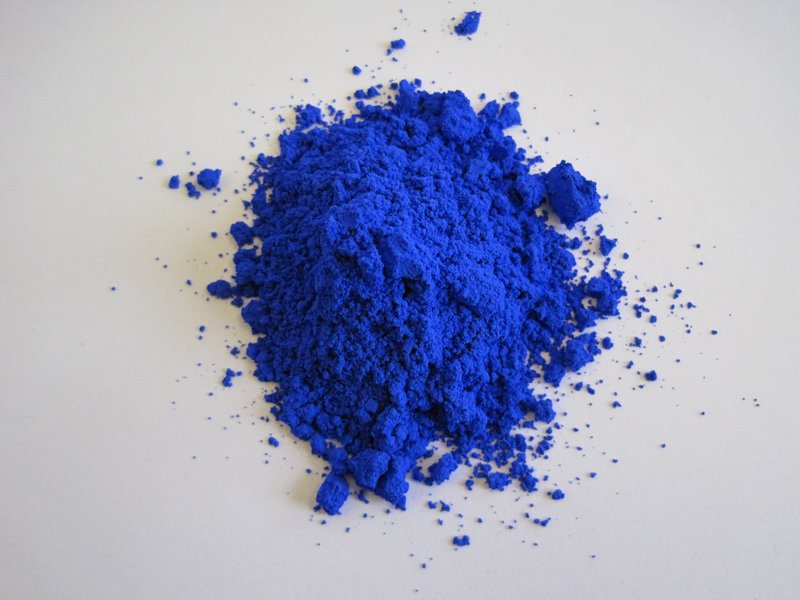
Gathering Blue
The color blue is really hard to extract from nature. Plus, when we can do it, it costs a lot to do so. For example, lapis lazuli, one source of the pigment, is mostly mined in Afghanistan and Pakistan from the rock ultramarine. This means that manufacturing more durable synthetic colors is the better option.
However, the last time a complex inorganic blue pigment (cobalt blue) was discovered was in the 19th century. Moreover, this pigment, a mixture of cobalt and aluminum oxides, is toxic if ingested in large amounts. If that’s not enough, it does not reflect heat, and it fades over time.
This is a big problem, as Brooks Tippett, vice president of operations at Pantone color company, told NPR, “In our systems, blue is one of the most highly requested color families.” But there’s new hope for blue.
In 2009, Professor Mas Subramanian of Oregon State University collaborated with students to manufacture materials that could be useful in electronics. They mixed and ground chemicals and then heated them up to 1093° Celsius (2000° Fahrenheit).
One graduate student, Andrew E. Smith, took out a particular mix from the furnace and was surprised when it turned out to be of bright blue color. Subramanian immediately knew that it was a big discovery.
They named the pigment “YInMn blue” after its chemical composition. It is made up of yttrium, indium, and manganese oxides.

Cool Blue
Subramanian, Smith, and another professor from OSU named Arthur Sleight filed to patent the material. They also published a paper about their discovery in the Journal of the American Chemical Society.
Soon after the team discovered the pigment, The Shepherd Color Company contacted them about it. The company deals with paints and plastics, and they hope to use it for outdoor applications in particular. The Forbes Pigment Collection at the Harvard Art Museum already obtained samples of the pigment to display, and then there is a whole spectrum of new colors that could be created by mixing this newest color.